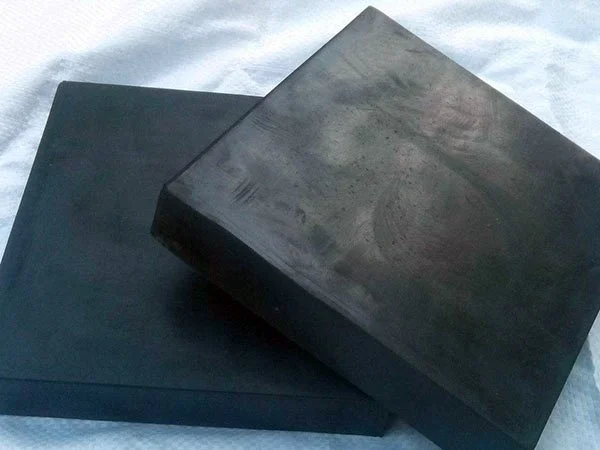
AASHTO Bearing Pads from Hecht Rubber Corporation
Our Capabilities
Hecht Rubber Corporation manufactures a full line of AASHTO Grade Bearing Pads for bridge, building and reservoir construction markets. Rubber bearing pads dampen vibration and permit for the natural thermal expansion and contraction of structures, whether precast concrete or steel, which aids in prolonging their lifespan.
We formulate and mix our own compounds and maintain rigid quality control throughout the manufacturing process to ensure excellent performance and load bearing resistance.
We offer unsupported rubber bearing pads in 50 to 70 (Shore A) durometer, which conform to Cal-Trans 51-1.12H, U.S. Army Corps of Engineers, American Association of Highway and Transportation Officials (AASHTO) Grade 2 and Grade 3 Standard Specifications for Highway Bridges and M251.
Available in Natural Rubber and Neoprene formulations, in rolls 36" and 48" wide in thicknesses up to 1" and in molded forms 36" and 48" widths in lengths up to 30' (longer lengths available).
Custom shapes sizes and lengths are available on a special order basis. Call us today to discuss your specific requirements!
Our capabilities also include 40 durometer Neoprene pads in custom sizes for pre-stressed reservoirs that conform to ASTM D2000 M2BC 414 A14 B14 C12 F17.
Key Properties
Load Distribution: These pads evenly distribute the weight and load from the superstructure (e.g., girders or beams) to the substructure (piers or abutments). This prevents stress concentrations and potential damage.
Accommodate Movement: AASHTO pads are made from flexible elastomeric material that accommodates various types of movement, including:
Thermal Expansion and Contraction: They allow the bridge to expand and contract with changes in temperature without causing damage.
Rotation: They permit the rotation of the bridge superstructure, which occurs due to the deflection of beams under load.
Shear Deformation: The pads deform horizontally to handle longitudinal movement and absorb forces caused by traffic, wind, or seismic activity.
Vibration Damping: The elastomeric material effectively dampens vibrations and absorbs shocks, reducing noise and stress on the structure. This is crucial for the longevity of the bridge.
Material: They are typically made from virgin neoprene (polychloroprene) or natural rubber (polyisoprene), which are chosen for their durability, resistance to weathering, and ability to handle various temperature extremes.


